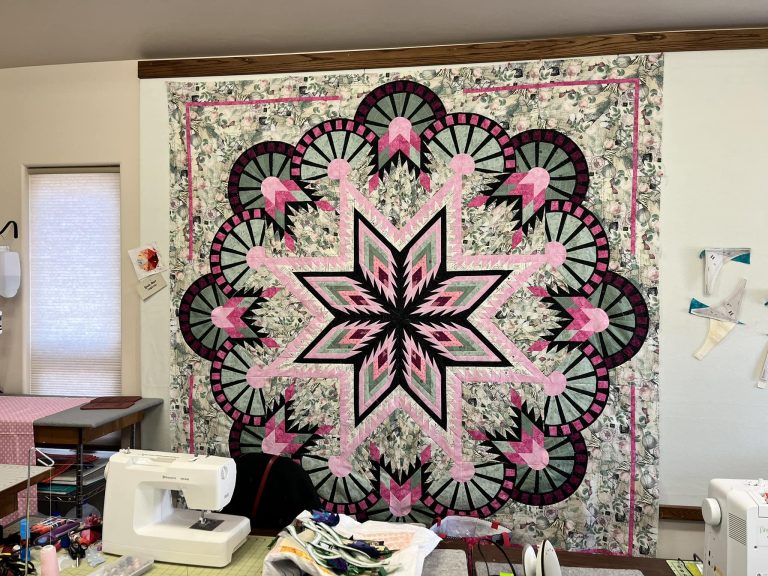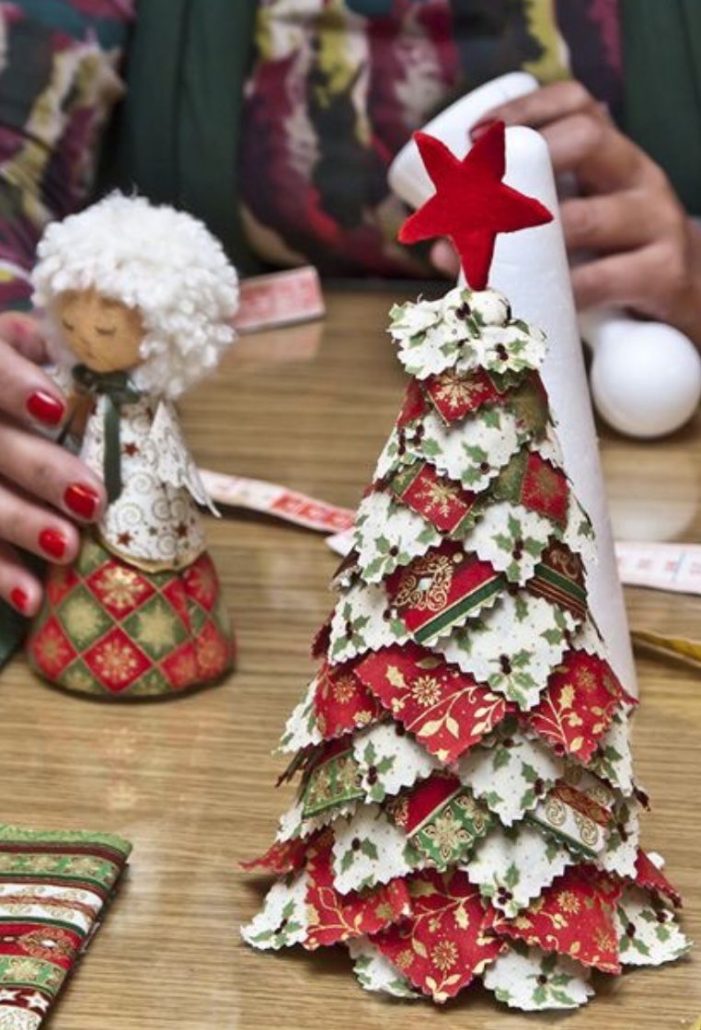

The Fabric Christmas Tree – TUTORIAL is a wonderful sewing project that combines creativity, festive charm, and practicality. This handmade decoration has become a favorite among crafters who want to add a personalized touch to their holiday décor. Unlike store-bought decorations, a fabric tree allows you to experiment with colors, textures, and patterns that reflect your unique style and holiday spirit.
Working on a Fabric Christmas Tree – TUTORIAL is also a fun way to reuse scraps of fabric left over from previous quilting or sewing projects. By turning these small pieces into something beautiful, you can create a decoration that is eco-friendly and filled with memories. It’s a project that blends sustainability with creativity, making it appealing for both beginner and experienced sewists.
Whether you are crafting for yourself, your family, or as gifts for loved ones, the Fabric Christmas Tree – TUTORIAL offers a timeless and heartwarming result. Handmade holiday items often become keepsakes passed down through generations, and this fabric tree is no exception.

To begin your project, gather the necessary supplies. You’ll need festive fabrics, thread, scissors, a sewing machine, and stuffing material. Decorative items like buttons, ribbons, or beads can also be used for embellishment. Choosing materials in advance ensures a smooth workflow.
The size of your tree will depend on the template or pattern you select. You can make small versions for table settings or larger trees to display on mantels and shelves. This flexibility allows you to customize your tree for different spaces.
Fabric choice is an exciting part of the process. Holiday-themed prints with snowflakes, stars, or holly are classic options, but you can also use solid colors or metallic fabrics for a modern touch. Mixing patterns gives your tree a patchwork effect that feels cheerful and creative.
Once you’ve chosen your fabrics, iron them to remove any wrinkles before cutting. Smooth fabric ensures precise cuts, which is especially important for symmetrical tree shapes. Accurate preparation makes the sewing process much easier.
Templates are key for consistency. Drawing or printing a tree outline on paper helps you cut identical fabric pieces. Most Fabric Christmas Tree – TUTORIAL patterns use multiple fabric panels stitched together to form the tree’s 3D effect.
Finally, prepare your workspace with good lighting and organized tools. Keeping everything at hand will help you stay focused and enjoy the festive crafting experience.
The first step in sewing your Fabric Christmas Tree – TUTORIAL is cutting out the fabric pieces. Use your template to trace the tree shapes and cut them carefully. You’ll need several identical pieces to achieve the layered, dimensional look.
Next, place two fabric pieces right sides together and stitch around the edges, leaving a small opening for turning and stuffing. Clipping the curves slightly before turning will help the fabric lay smoothly once flipped right side out.
After turning the fabric pieces, use a tool like a chopstick or knitting needle to gently push out the corners and edges. This step ensures your tree panels look crisp and neat, ready for the next stages.
Stuff each fabric panel lightly with filling material. Polyester fiberfill is a popular choice, but fabric scraps can also work for a firmer tree. The stuffing gives the tree its shape and helps it stand upright.
Once all panels are stuffed, arrange them together and stitch along the center to connect them. This is where the tree takes its 3D form. Aligning the panels carefully ensures balance and symmetry in the finished piece.
Finally, sew up the openings and add any final stitches to secure the structure. At this stage, you’ll have the basic tree shape, ready for embellishments and finishing touches.
One of the joys of the Fabric Christmas Tree – TUTORIAL is personalizing your creation with decorations. Adding small details can transform a simple tree into a festive centerpiece.
Buttons make excellent ornaments. Sew them onto the panels in different colors and sizes to mimic baubles. You can even use glittery or metallic buttons for extra sparkle.
Ribbons and bows are another charming addition. Tie small bows and attach them with a few stitches or fabric glue. This adds a playful touch that feels festive and elegant.
Beads and sequins can be sewn on for a dazzling effect. These details catch the light beautifully, making your fabric tree stand out on holiday evenings.
A star topper is the perfect finishing touch. You can craft a small star from felt or use a ready-made ornament to attach to the top of your tree. It’s a classic detail that makes the decoration complete.
Finally, consider adding a fabric or felt base to your tree. A small circular piece of fabric, perhaps quilted, can serve as a sturdy stand and add to the overall presentation.
When working on your Fabric Christmas Tree – TUTORIAL, take time with each step. Rushing through cutting or stitching can lead to uneven results, while careful work ensures a polished outcome.
Use high-quality fabrics if you want your tree to last for years. Durable cotton or blends with metallic accents work beautifully and hold up well over time.
Press your seams as you go. This simple habit helps maintain neat lines and makes the final piece look professional. Even small handmade items benefit from good finishing.
If making multiple trees, sew them assembly-line style. Cutting and sewing in batches can save time and make the process more efficient, especially if you’re preparing holiday gifts.
Store your fabric trees carefully after the season ends. Place them in a dry, cool space, preferably in a fabric bag or box to protect them from dust. This ensures they’ll look fresh year after year.
Lastly, enjoy the process and don’t be afraid to experiment. Each fabric tree you make will have its own charm, and imperfections often add to the handmade beauty.
Is this project beginner-friendly?
Yes, the fabric Christmas tree is perfect for beginners. The steps are simple, and the results are impressive.
What type of fabric works best?
Cotton, felt, or holiday-themed prints are excellent choices. They’re easy to sew and give a festive appearance.
Can I make the tree without a sewing machine?
Yes, it’s possible to hand sew the panels, though it will take more time.
How do I make the tree stand upright?
Stuffing the panels firmly and stitching them securely at the center helps the tree balance well.
Can I wash the fabric Christmas tree?
Spot cleaning is recommended. Machine washing could damage the stuffing or decorations.
Can I scale the pattern to make larger or smaller trees?
Absolutely. Adjust the template size to create trees of different heights for a festive display.
The Fabric Christmas Tree – TUTORIAL is a creative, festive, and sustainable sewing project that adds warmth and personality to your holiday season. From cutting fabric panels to decorating your finished tree, each step of the process is enjoyable and rewarding.
Now that you know how to create this handmade holiday decoration, I’d love to hear your thoughts. Share your experiences, ideas, or suggestions in the comments below. Your feedback helps inspire more festive sewing projects and keeps our creative community growing.